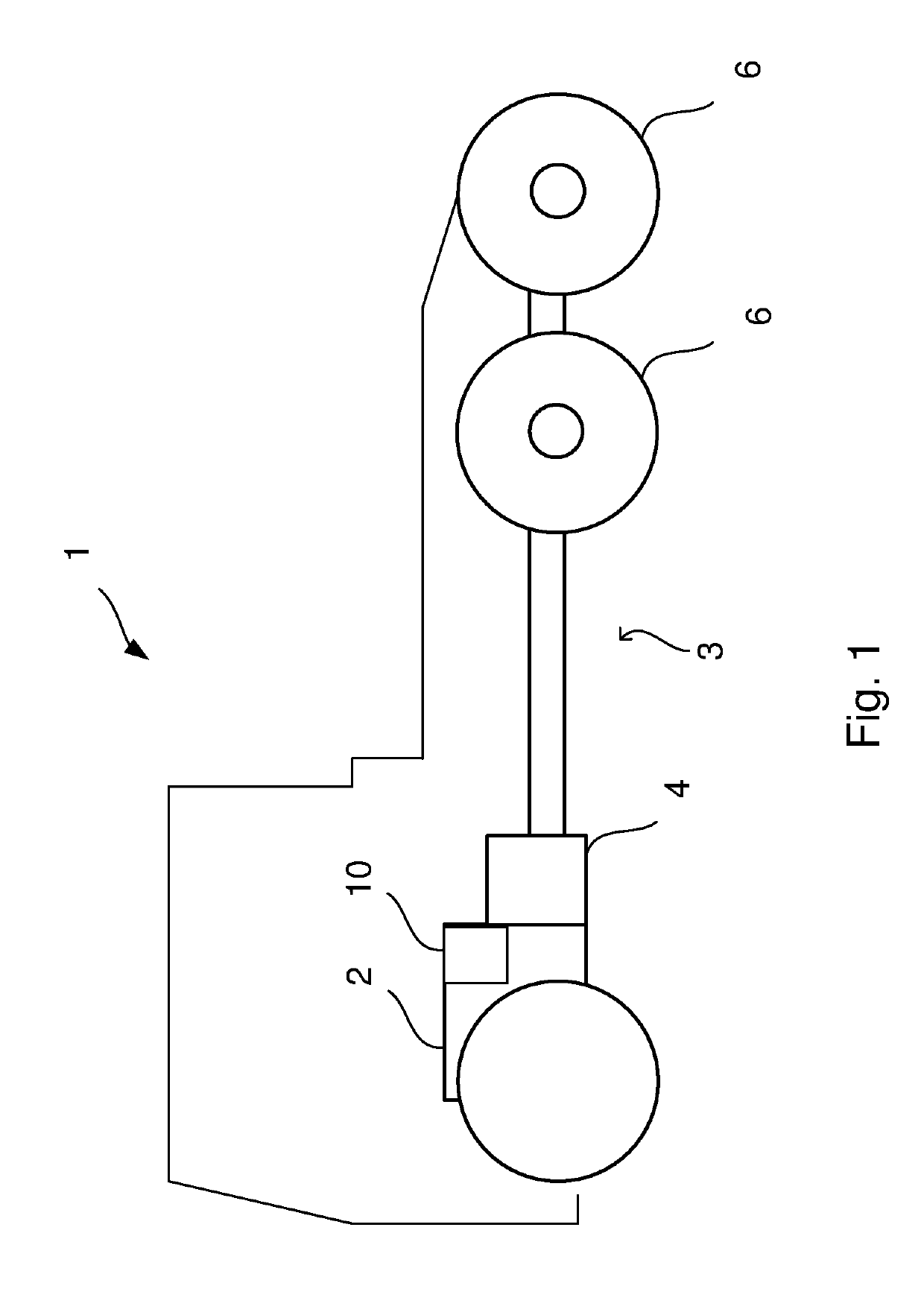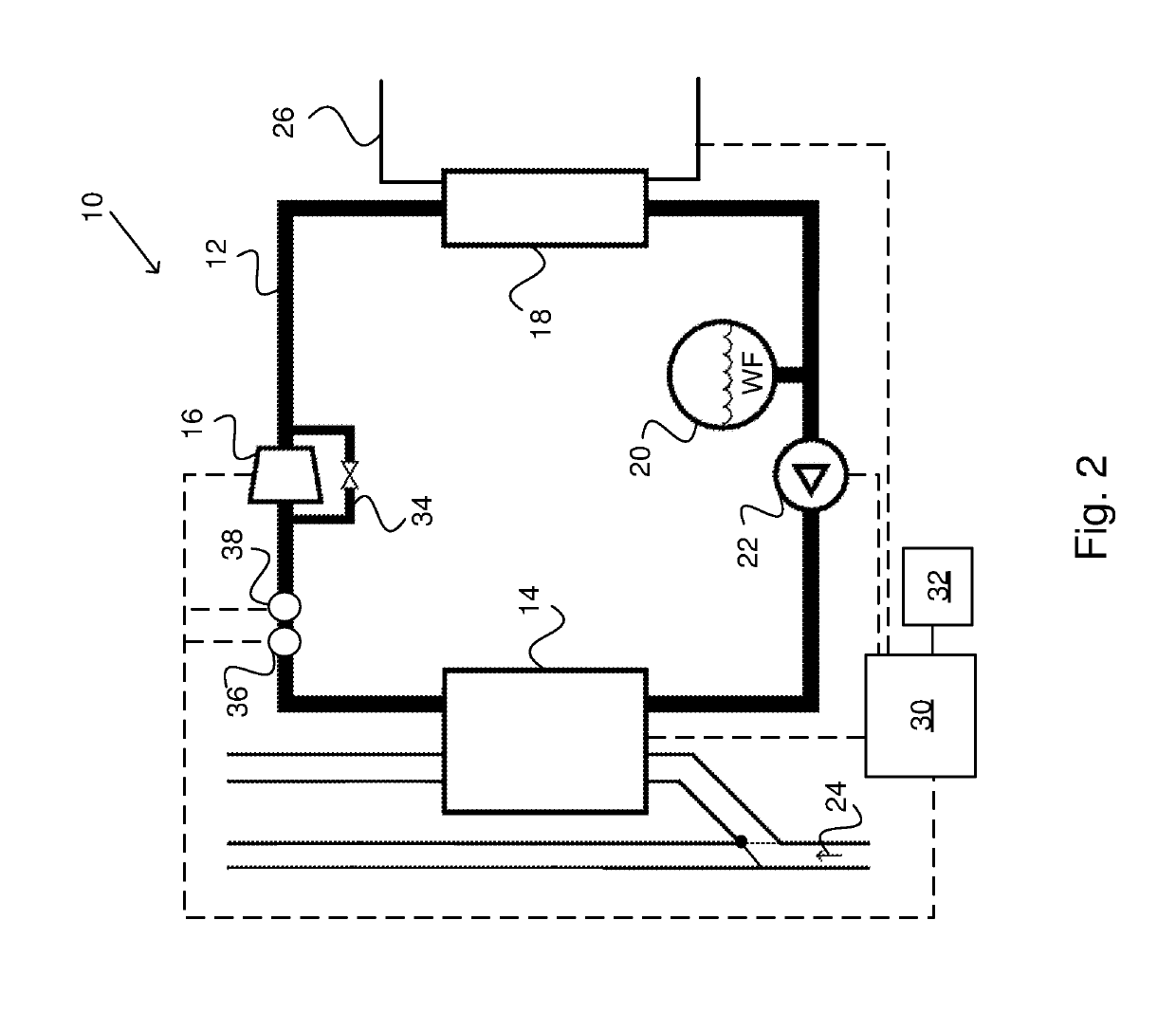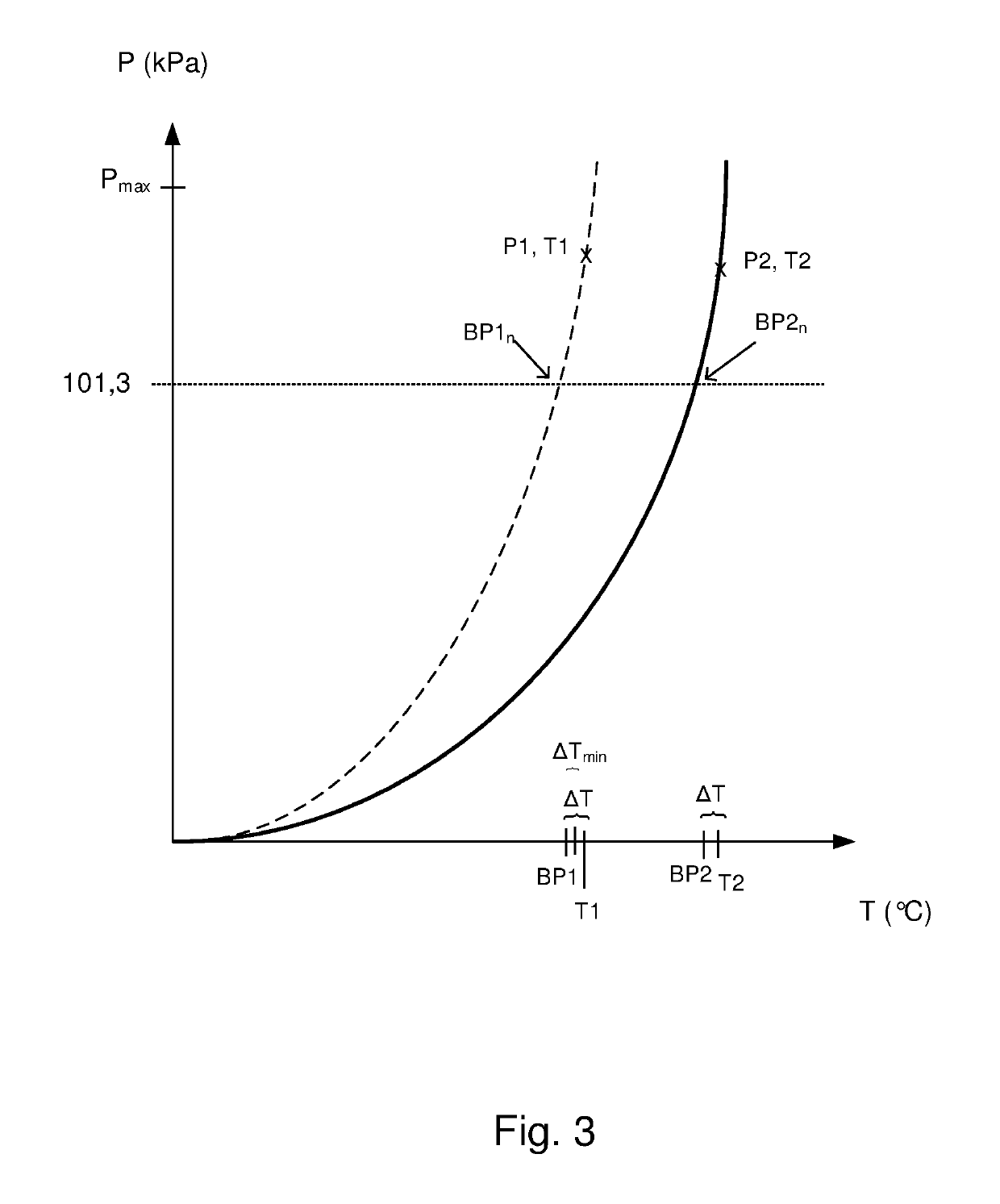A method and system for controlling the rotational speed of an expander in a waste heat recovery system
a waste heat recovery and expander technology, applied in the direction of mechanical equipment, machines/engines, transportation and packaging, etc., can solve the problems of reducing the amount of heat that can be handled in the waste heat recovery system, limiting the heat that can be handled in the system, and affecting the operation of the system. , to achieve the effect of reducing the pressure of the working fluid and increasing the rotational speed of the expander
- Summary
- Abstract
- Description
- Claims
- Application Information
AI Technical Summary
Benefits of technology
Problems solved by technology
Method used
Image
Examples
Embodiment Construction
[0041]FIG. 1 schematically shows a side view of a vehicle 1 according to an embodiment of the invention. The vehicle 1 has a powertrain 3 comprising a combustion engine 2 and a gearbox 4 connected to the combustion engine 2 and the driving wheels 6 of the vehicle 1. The vehicle 1 further comprises a waste heat recovery system 10 associated with the powertrain 3. The vehicle 1 may be a heavy vehicle, e.g. a truck or a bus. The vehicle 1 may alternatively be a passenger car. The vehicle may be a hybrid vehicle comprising an electric machine (not shown) in addition to the combustion engine 2.
[0042]FIG. 2 schematically shows a waste heat recovery system 10 associated with a powertrain 3 of a vehicle 1 according to an embodiment of the invention. The vehicle 1 is suitably configured as described in FIG. 1. The waste heat recovery system 10 comprises a working fluid circuit 12; an evaporator 14; an expander 16; a condenser 18; a reservoir 20 for a working fluid WF and a pump 22 arranged t...
PUM
 Login to View More
Login to View More Abstract
Description
Claims
Application Information
 Login to View More
Login to View More - R&D
- Intellectual Property
- Life Sciences
- Materials
- Tech Scout
- Unparalleled Data Quality
- Higher Quality Content
- 60% Fewer Hallucinations
Browse by: Latest US Patents, China's latest patents, Technical Efficacy Thesaurus, Application Domain, Technology Topic, Popular Technical Reports.
© 2025 PatSnap. All rights reserved.Legal|Privacy policy|Modern Slavery Act Transparency Statement|Sitemap|About US| Contact US: help@patsnap.com



